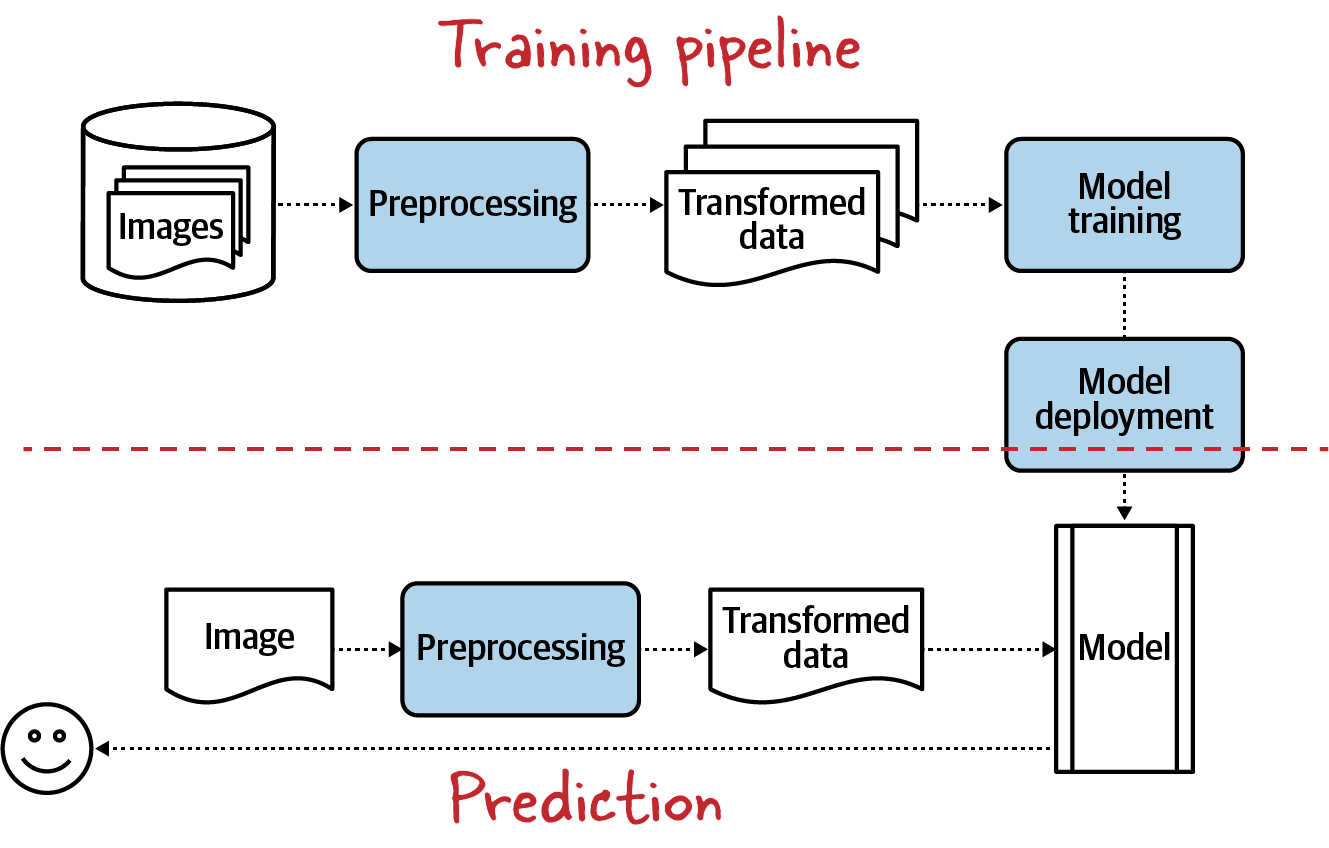Chapter 7. Training Pipeline
The stage after preprocessing is model training, during which the machine learning model will read in the training data and use that data to adjust its weights (see Figure 7-1). After training, the model is saved or exported so that it can be deployed.

Figure 7-1. In the model training process, the ML model is trained on preprocessed data and then exported for deployment. The exported model is used to make predictions.
In this chapter, we will look at ways to make the ingestion of training (and validation) data into the model more efficient. We will take advantage of time slicing between the different computational devices (CPUs and GPUs) available to us, and examine how to make the whole process more resilient and reproducible.
Tip
The code for this chapter is in the 07_training folder of the book’s GitHub repository. We will provide file names for code samples and notebooks where applicable.
Efficient Ingestion
A significant part of the time it takes to train machine learning models is spent on ingesting data—reading it and transforming it into a form that is usable by the model. The more we can do to streamline and speed up this stage of the training pipeline, the more efficient we can be. We can do this by:
- Storing data efficiently
-
We should preprocess the input images as much as possible, and store the preprocessed values in a way that is ...
Get Practical Machine Learning for Computer Vision now with the O’Reilly learning platform.
O’Reilly members experience books, live events, courses curated by job role, and more from O’Reilly and nearly 200 top publishers.

